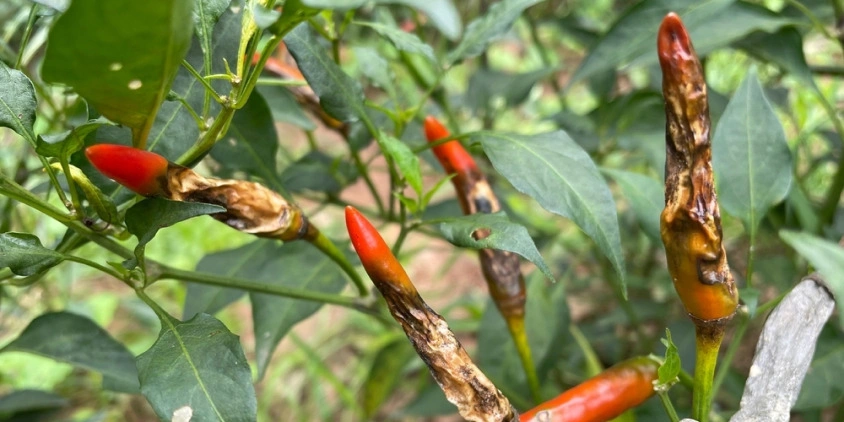
Anthracnose: How To Identify And Control The Disease
In the eyes of crop growers, anthracnose is more than just a plant disease — it’s a complex challenge that demands constant lookout and timely action. This widespread fungal disease, known for its ability to affect various plant species and survive between growing seasons, requires a comprehensive control approach.
Digital precision agriculture tools make it easier to track diseases and plan treatments, helping growers decide when to use cultural prevention and control methods and when it’s already time to apply fungicides. With science-backed control methods and current agricultural technology, growers can effectively control anthracnose to maintain their production standards and meet market demands.
What Is Anthracnose, And How Does It Impact Crops?
Anthracnose is a particularly troublesome fungal infection that requires attention across the entire cultivation and storage process. This common crop disease can strike before harvest and continue to develop even after crops are picked. It affects stems, leaves, shoots, flowers, and fruits, causing dead tissue patches, leaf drops, and fruit damage. The fungi grow and spread best in warm, humid environments.
The disease can affect and significantly reduce yields in grains, legumes, and vegetables. Besides, it often causes post-harvest fruit rot in tropical fruits like mangoes and avocados, making them unsellable.
How Does Anthracnose Spread And Manifest Itself?
Anthracnose disease can quietly infect plants before showing clear signs. Knowing how it spreads and what to look for can help you spot trouble before it takes hold.
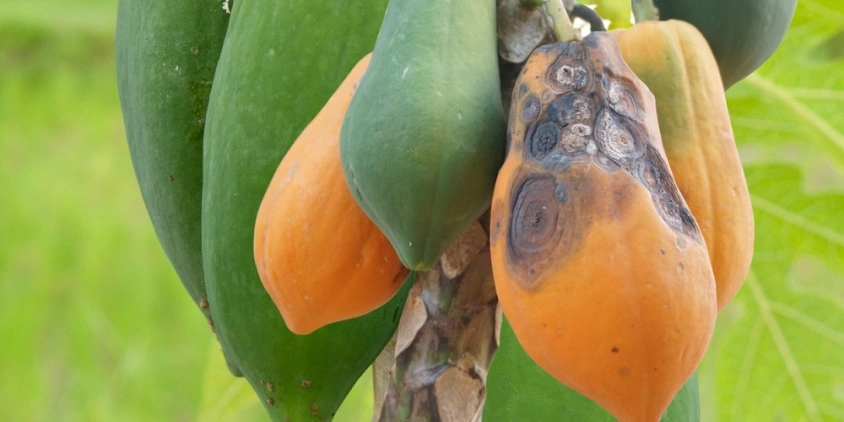
What Causes Anthracnose?
Anthracnose is caused by spores of Colletotrichum fungal species. Some strains only infect specific plants (hosts), while others can infect many different plant species (both hosts and non-hosts). For example, a strain of Colletotrichum gloeosporioides from one plant can often cause disease in other plant types, causing damage to growing cassava, tomatoes, eggplants, cucurbits, and others . This makes planning crop rotations and managing the disease more difficult.
| Causal organism | Host plants |
|---|---|
| Colletotrichum lindemuthianum | Beans |
| Colletotrichum truncatum | Soybeans |
| Colletotrichum coccodes | Tomatoes |
| Colletotrichum acutatum | Peppers |
| Colletotrichum capsici | Chili peppers |
| Colletotrichum orbiculare | Cucumber |
| Colletotrichum sublineola | Sorghum |
| Colletotrichum graminicola | Corn |
| Colletotrichum gossypii | Cotton |
| Colletotrichum acutatum | Strawberries |
| Colletotrichum viniferum | Grapes |
| Colletotrichum musae | Bananas |
| Colletotrichum gloeosporioides | Mangoes, avocados, citrus fruits |
| Colletotrichum papayae | Papaya |
How The Disease Infects Plants?
The infection cycle begins when the spores land on susceptible plant tissue and environmental conditions favor fungal growth. Here are the factors that primarily influence the spread of anthracnose disease:
- Survival between growing seasons. The fungus spores remain viable in plant debris left in the field and in contaminated seeds, creating a source of infection for the next growing season.
- Spread mechanisms. The wind carries anthracnose spores to new areas, while rain and irrigation systems splash them onto nearby plants. This combination allows the pathogen to disperse over both short and long distances.
- Farm operations. Farm workers can unknowingly spread the disease through contaminated tools and equipment. Regular handling of infected plants during routine field operations also contributes to pathogen movement between field areas.
- Environmental conditions. High humidity and moderate temperatures create ideal conditions for spores to germinate and infect plants. These conditions often occur in densely planted areas with poor air circulation.
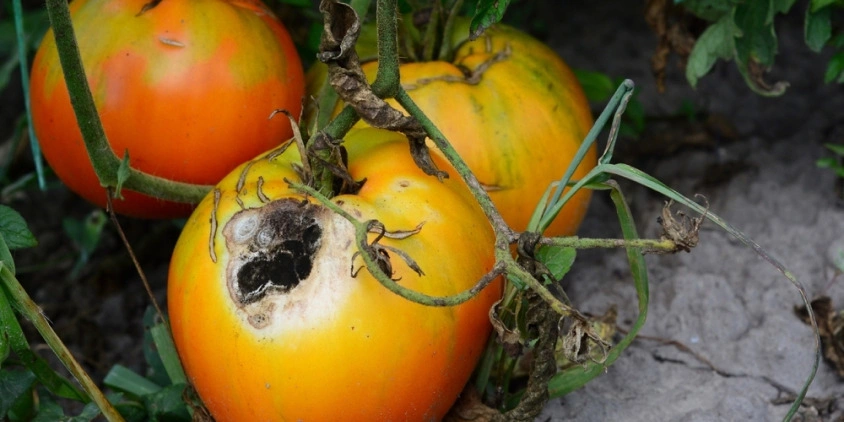
What Does Anthracnose Look Like?
Anthracnose manifests as many symptoms across different crops and plant parts. Growers should watch for:
- Dark, sunken lesions. Anthracnose blight appears on leaves, stems, and fruits, serving as the primary indicator of infection.
- Spots on the leaves. Initially small, anthracnose leaf spots expand into larger blotches, eventually causing tissue death in affected areas.
- Premature defoliation. Infected plants often shed leaves earlier than normal. This compromises overall plant health.
- Stalk rot. Brown lesions on the stalks’ rind typically appear later in the season. Anthracnose stalk rot can cause plant lodging, decreased harvestability, and lower yield.
- Growth issues. Reduced photosynthesis and nutrient absorption in infected plants can cause them to grow slower.
- Fruit damage. Dark rot spots (both pre- and post-harvest) decrease fruit quality and commercial value.
Early detection of these anthracnose signs helps stop disease progression, thereby reducing crop losses.
How To Stop And Get Rid Of Anthracnose
Getting a handle on anthracnose fungus requires a dual focus: prevention and treatment. By using satellite crop monitoring to keep an eye on crop health, farmers can catch early warning signs and tackle the disease efficiently, whether that means preventing an outbreak or treating existing infections.
Anthracnose Prevention
Though the weather that promotes agricultural diseases is out of your control, there are ways to lessen the chances of outbreaks. Besides being more cost-effective than treatment, preventing the disease also aids in warding off other fungal infections, such as powdery mildew. Here’s how to prevent anthracnose in your fields:
- Cultivating resistant crop varieties. Select and plant varieties with resistance or tolerance to anthracnose fungal disease.
- Seed management. Use only disease-free seeds and create a second line of defense with fungicide seed treatments. A clean start is half the battle against anthracnose pathogen won.
- Proper plant spacing. Give your plants enough room to breathe. This simple practice helps reduce humidity around the plants — an environment less favorable for fungal growth.
- Root-zone irrigation. Implement drip irrigation instead of overhead watering. This method not only prevents the growth of disease-causing microorganisms, but also reduces the spread of fungal spores through water droplets.
- Field sanitation. Removing infected plant material after harvest eliminates fungal spores’ winter hideouts.
- Crop rotation. Alternating between anthracnose hosts and non-hosts is a smart way to interrupt the transmission of disease. Using EOSDA Crop Monitoring’s Crop rotation feature, you can easily plan and track your rotation schedules for optimal field usage with minimal disease pressure.
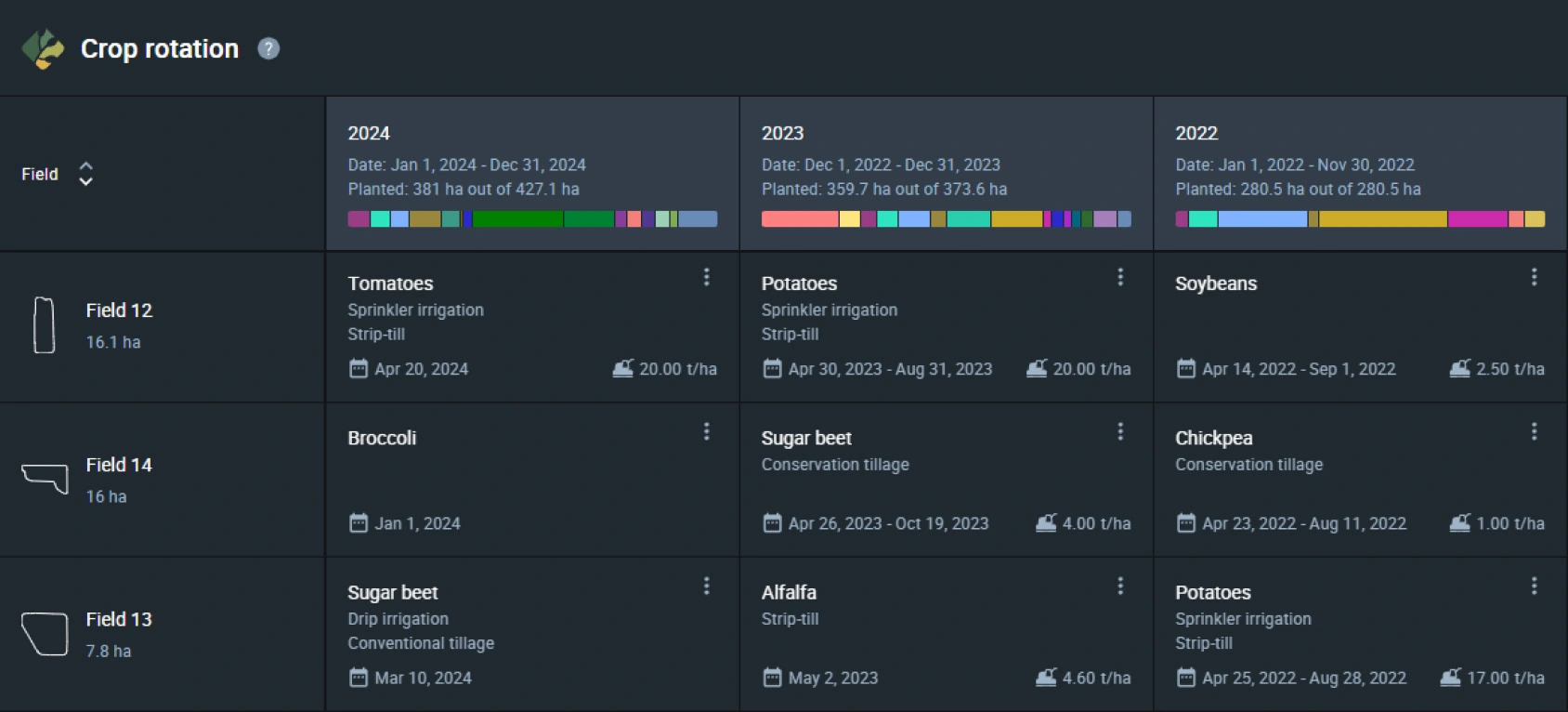
Proactive disease control can save growers a lot of money on fungicide treatments and potential losses due to anthracnose. This is where EOSDA Crop Monitoring’s Disease risk feature becomes your digital helper, which predicts potential outbreaks based on weather and vegetation data.
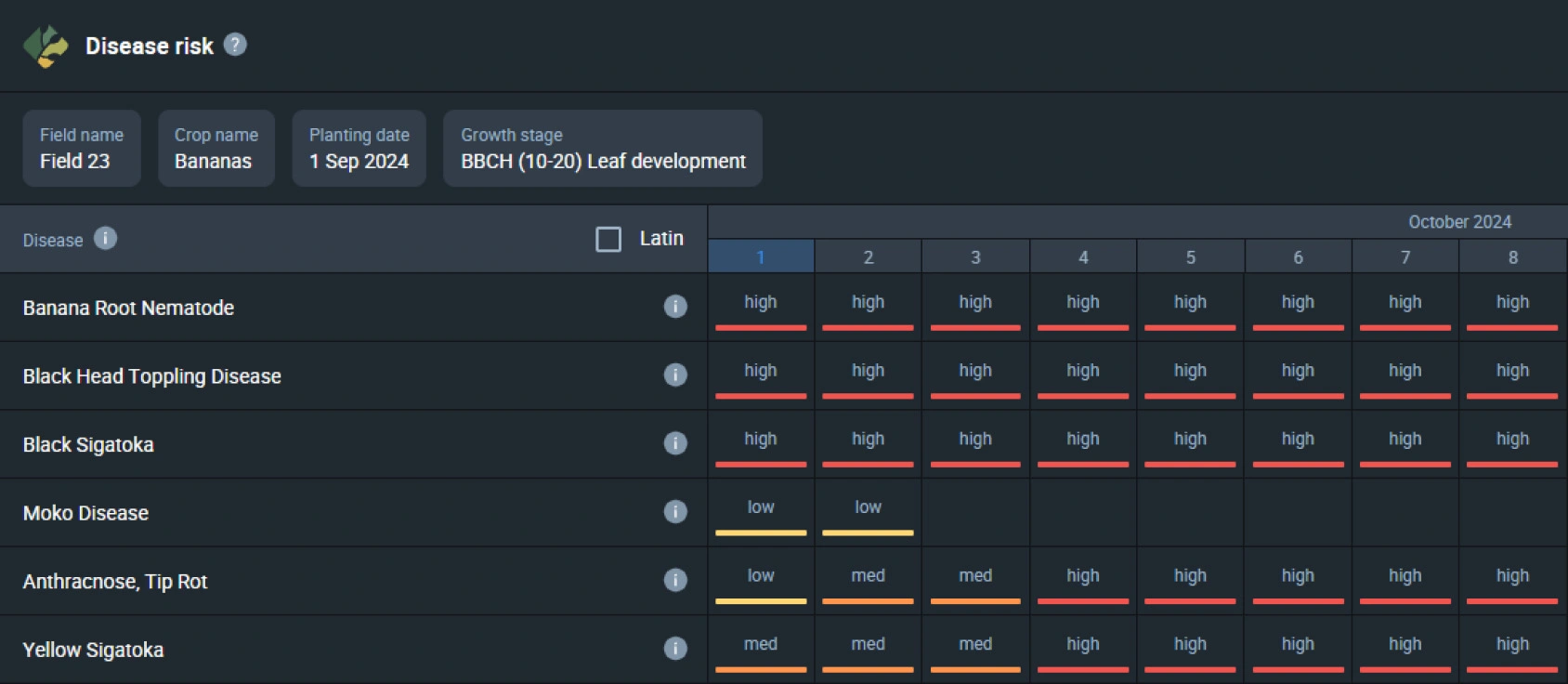
When the algorithm detects a high disease risk, it will warn you, so you can dispatch scouts to check the hotspot. If they notice leaf spots, continue with prevention measures. However, in the case of water-soaked spots or dark lesions on fruits, it’s time to shift from prevention to treatment strategies .
Anthracnose Control And Treatment
If left untreated, this disease alone can reduce strawberry yields by as much as 70% . Although the yield loss figures vary from crop to crop, they reveal the disease’s significant economic impact on farmers. As a result, they must detect the threat and treat their crops in time to maintain yields.
The most effective measures for anthracnose disease control and treatment include:
- Cultural practices. One of the most effective approaches to anthracnose management is to focus on basic field maintenance. This involves removing any infected plant parts, like leaves or fruits, to stop the disease from spreading further. Adding a layer of mulch around your plants can be helpful, too; it reduces the amount of soil that splashes onto the plants during watering or rain, which often carries disease spores.
- Biological control. Beneficial bacteria like Bacillus subtilis or fungi such as Trichoderma can help reduce infections. These living organisms work by competing with or directly affecting anthracnose-causing pathogens.
- Pruning. Removing the lower leaves can be effective for certain crops, particularly peppers and tomatoes. This practice creates a barrier between the soil, where many pathogens live, and the upper parts of the plant. It improves air circulation too, which helps keep the plants drier and less susceptible to infection.
- Fungicide application. Often, using fungicides becomes necessary to get anthracnose under control, especially in crops like tomatoes, cucumbers, and beans. Copper- or chlorothalonil-based fungicides protect healthy plant tissue from becoming infected, though they won’t cure already infected parts.
Keeping track of these various management practices across multiple fields can be challenging. Here’s where EOSDA Crop Monitoring’s Field Activity Log comes in handy. This easy-to-use feature helps streamline all disease control measures by scheduling, assigning, and tracking all anthracnose-related activities, from cultural practices to fungicide applications, across all fields in one place.
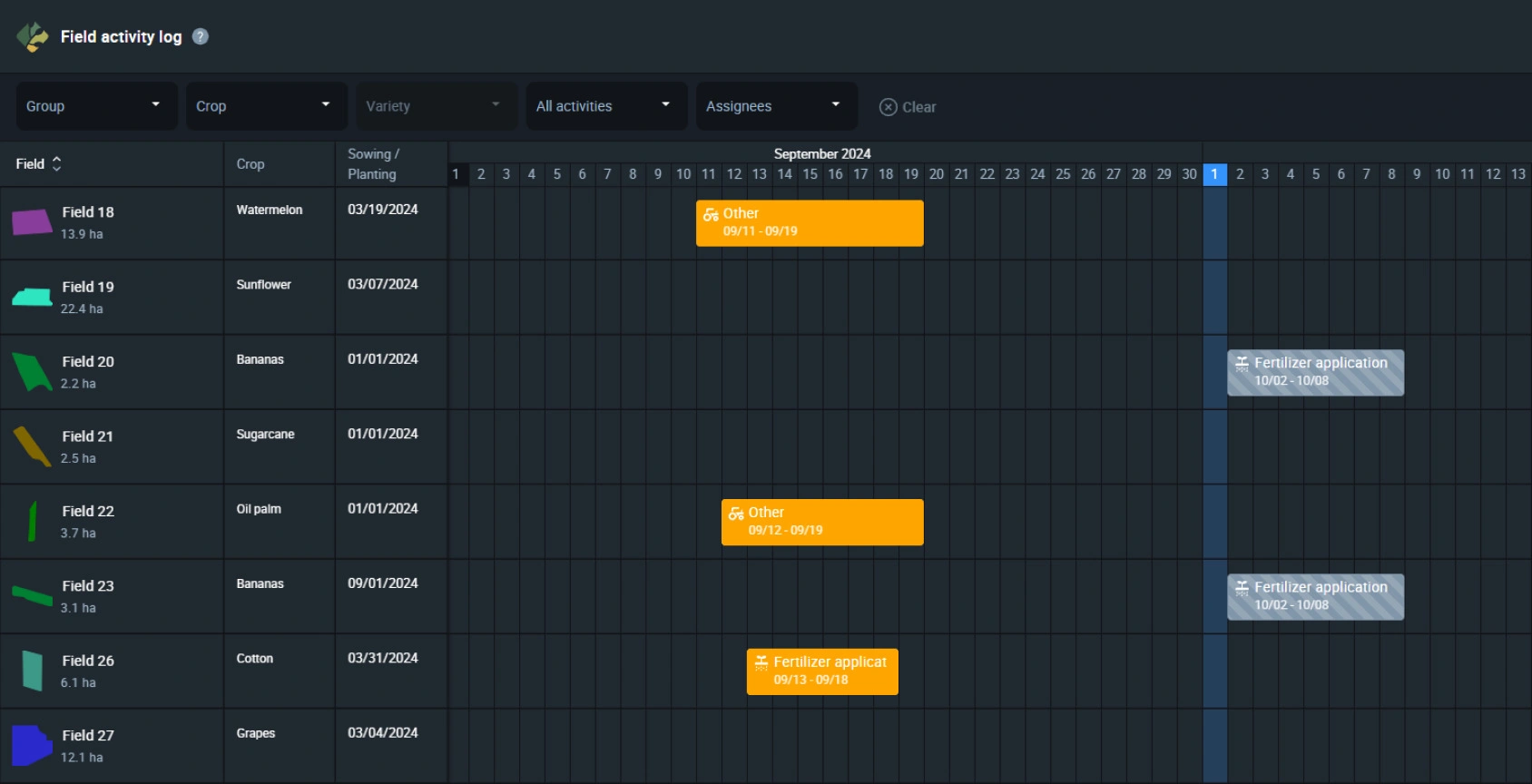
Anthracnose control is most effective when combining traditional agricultural knowledge with modern tools and techniques. Using precision agriculture platforms to support and manage established farming practices creates a more organized and efficient approach to disease control, meaning healthier crops and better yields.
About the author:
Vasyl Cherlinka is a Doctor of Biosciences specializing in pedology (soil science), with 30 years of experience in the field. He attended the engineering college in Ukraine and received his degree in agrochemistry, agronomy and soil science in the Chernivtsi National University. Since 2018, Dr. Cherlinka has been advising EOSDA on problems in soil science, agronomy, and agrochemistry.
Recent articles

Analyze 2025 & Plan Your Best Year Yet: LandViewer Christmas Offer
It’s the most wonderful time of the year! The Christmas holidays are here, and so is your chance to analyze 2025 and plan a prosperous 2026 with more affordable Pro plans in LandViewer.

EOSDA Models Climate Change Impact On Sugarcane Yields
EOSDA modeled future temperature, rainfall, and other climate impacts on Veracruz sugarcane. The results help growers plan long-term adaptation strategies, including timing, varieties, and irrigation.

EOSDA LandViewer Black Friday Sale: Exclusive Offers & Giveaway
This Black Friday, LandViewer offers new users the chance to save on monthly plans, get extra months with yearly subscriptions, and participate in a free annual plan giveaway.